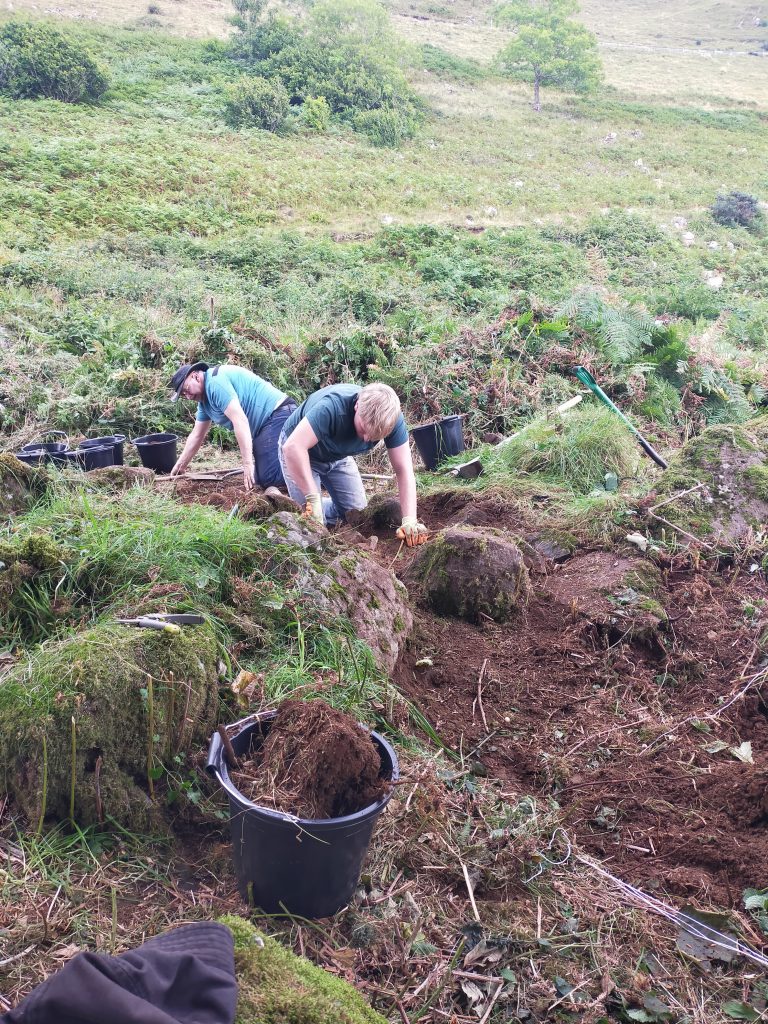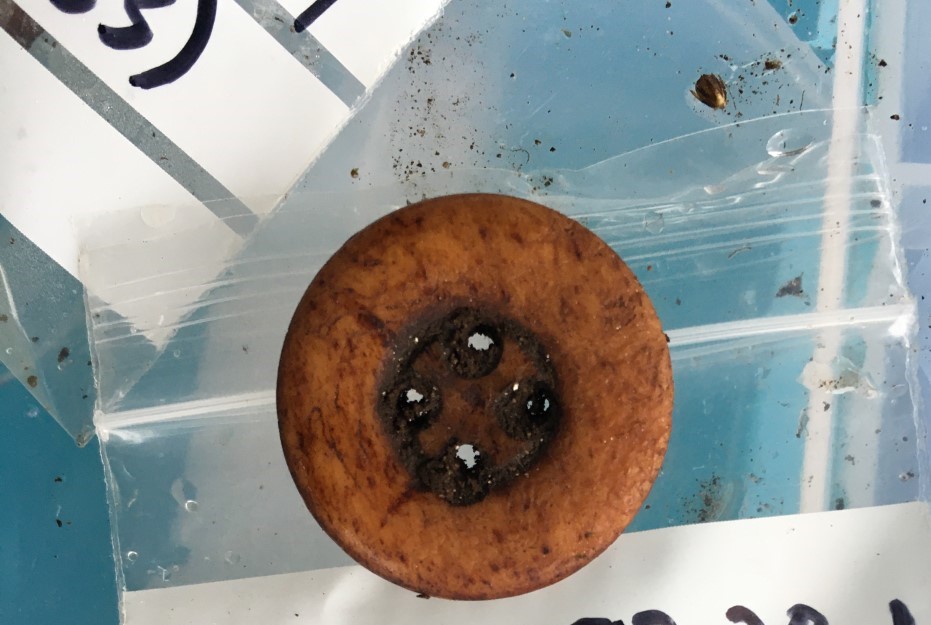The dust and a bit of good old West Coast drizzle has settled on the stunning and evocative amphitheatre of Camas nan Geall. The 10 days of excavations and surveying have attracted great support from a wide range of volunteers. People from all backgrounds and levels of experience joined us to explore and investigate this archaeologically significant location: from 4th year degree level archaeology students honing their field-work skills, to curious novice volunteers, interested in finding out more about local heritage and history.
The two sites selected for further investigation during this part of the project couldn’t be more different from each other. One; a partially ruined 19th century building, retaining clear architectural features of doorway, window spaces, and internal dividing walls. Previously partially excavated during investigations in 2019, these remains have clearly been a dwelling-house at some time. The other; ‘mystery building’, with a much more ancient looking and deteriorated structure, almost completely obscured by bracken. Once the vegetation had been cleared by keen workers, a roughly rugby-ball shaped outline comprised of boulders, stones and earth/turf was revealed, leading those present to speculate on its possible age and past use – 18th century agricultural? Mediaeval, even perhaps Norse dwelling?
When carefully unearthed in stages in two perpendicular trenches, the site offered continued mystery – the possible turf-based walls revealed themselves to be less carefully constructed than had been thought. Large boulders outlined a deliberately placed, but relatively random, crude walled enclosure.
The trenches here uncovered relatively few artefacts, mainly parts from one broken glass bottle of 18th or early 19th century origin. There were some ceramic fragments and a small piece of ‘slag’ – a nugget of previously molten metal from ironworking activities. The scarcity of ‘finds’ led to the conclusion that this was some kind of agricultural enclosure, probably for animals, the walls of which had been heavily robbed for stone to make a more contemporary dry-stane-dyke, situated adjacent. Mental images of shepherds supping from a bottle of beer amongst the other tasks involved in tending their flocks came to mind… Sadly, not likely to have been the viking dwelling that had been tentatively suggested! Not to lose hope though, it has been a relatively small scale investigation on the remains here require more research and a further survey of this area in March is planned, when the surrounding vegetation will be much less intrusive.
The renewed scrutiny of the 19th century house has been somewhat less mysterious, but considerably more exciting and productive!
Painstaking investigation of the ruins has uncovered impressive internal and external flooring. The outside, slabbed frontage had already been partially exposed in 2019, but on this occasion, a further area has been excavated, showing a greater extent of this outdoor paved area.

Inside the walls, as extensive ‘tumble’ – collapsed partitions and other rubble – were removed layer by layer, initially a block-set stone floor emerged. Then, as more earth and fallen rocks were removed, beautifully regular, rounded cobbles, forming an earlier floor were revealed.
It is clear that the history of this structure is more complex than it simply being a 19th century, tenant-farmer’s house. The evidence of the reworking of this property from a rude, ‘hipped’ house to a larger, ‘square-gable’; the addition of extra rooms, along with the craftsmanship involved in creating the different sections of cobbled flooring, suggests that this is likely to have been an older ‘blackhouse’ which was improved and extended into a more refined dwelling. The artefacts discovered in-situ were indicative of a home of higher standing; a fragment of glassware which could be the base of a sherry glass; a delicate bone button…
If we reflect and deduce from local historical documents, there is potential that this building might have been the home of the local Factor, John McColl. Infamous in the area for having evicted the inhabitants of the surrounding townships during the dark days of The Clearances, McColl is recorded as having the tenancy of Camas nan Geall from 1828 to 1833. A house of this type would have been fitting for the Laird’s right-hand man. Take a look at this clip (forward to 5.25) to watch Angus Henderson tell the story of John McColl at the latter’s graveside at Kilchoan, Ardnamurchan









